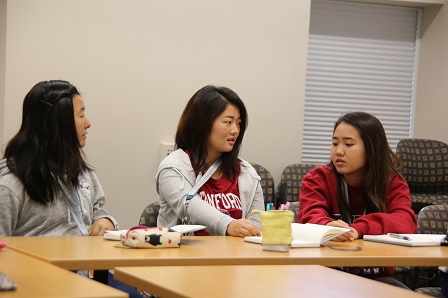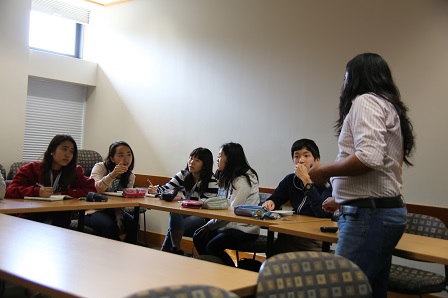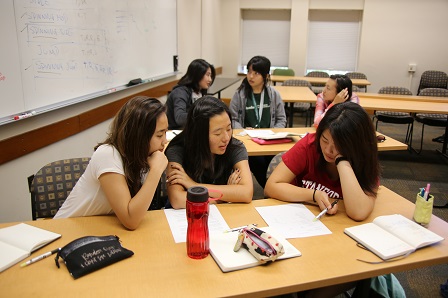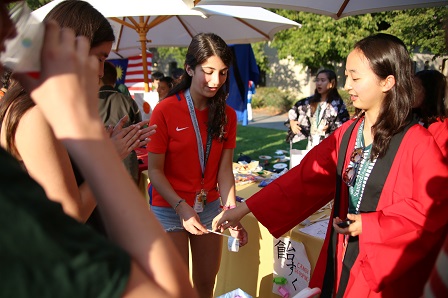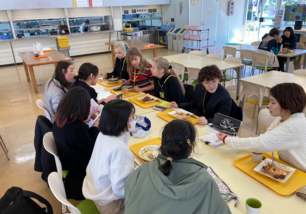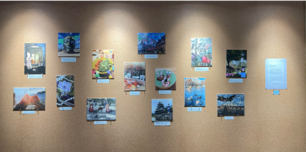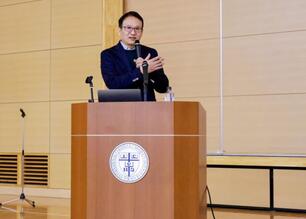今年も生徒10名がスタンフォード大学のサマープログラムに参加しました。
このプログラムはスタンフォード大学の中で3週間にわたって実施されるプログラムで、実際にスタンフォード大学で教えている教授から授業を受けたり、世界各国から参加している高校生と交流プログラムに参加することができます。3週間スタンフォード大学内の寮にとまり、週末はフィールドトリップに参加したりと盛りだくさんの内容でした。
実際の授業内容は下記の通りです。

Neuroscience
Mathematical Logic and Problem Solving
Business and Entrepreneurship
Developing Critical Thinking
Visual Design Thinking
Decision Leadership and Negotiation
といった幅広い範囲の授業を受けることができました。
今回参加した国は、カザフスタン、中国、オーストラリア、ブラジル、メキシコ、チリ、香港、マレーシア、インドネシア、タイなどでした。Multi-Cultural Exhibitionでは各国の紹介を行ったり、異文化を体験する機会となりました。
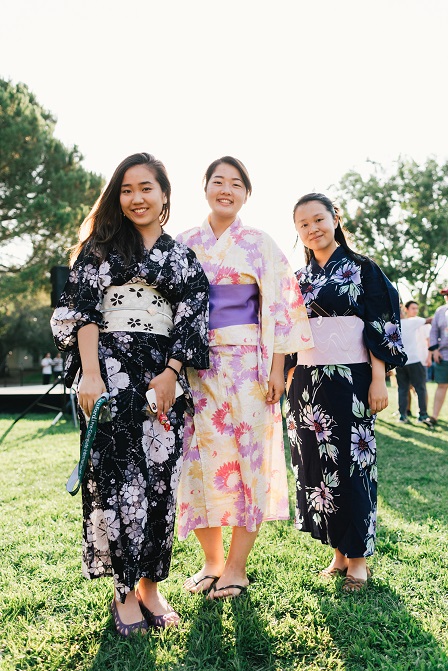
以下、生徒の感想の一部です。
・とても印象深いイベントに、Global Solutions Project と Multicultural night がありました。Multicultural night では、生徒達が自分の国ごとにブースを作ってその国の食べ物や遊びを紹介しました。日本のブースでは、ゴム鉄砲や剣玉や折り紙などの日本の昔ながらの遊びを体験できるようにしていました。どの遊びもとても外国の人に気に入ってもらえたのですが、驚いたことに剣玉や折り紙が最近アメリカでも流行り始めているということや、剣玉に良く似た玩具が他の国の伝統的な玩具にもあるということなどを外国の方に教えてもらいました。Global Solutions Projectでは、僕達の寮や別の寮の生徒達と混ざったチームで自分たちの島を、政治経済や文化などの社会構造までを含めてデザインして発表するプロジェクトでした。プログラム中に四回メンバーで集まり、毎回その島で起きるであろう問題やそれに対する解決策などを皆で提案し話し合いました。印象に残ったのは、他の出身国のメンバーから想像もしないようなアイデアが沢山出て来たことでした。日本から離れた国の生徒だと、周りの国の情勢や歴史や社会に付いての知識も全然違うので、出てくるアイデアも日本人の僕には最初イメージの湧かないものでしたが、分かると凄い画期的だなと感じるものばかりでした。このプロジェクトでは一つの国をデザインしていたので、アイデアはやはりメンバーの国の状況が強く反映されるのだなと思いました。
このスタディーツアーでは楽しいことを沢山体験しましたが、新しいことに戸惑うことや上手く行かないことも沢山ありました。例えば、授業内のアクティビティーが全然上手く行かなかったり、いくつかの国の文化を理解するのが難しかったりすることもありました。しかし、このような困難を体験することにも大きな意味があったと思います。ずっと一つの場所に住んでいると、特定の考え方や常識がいつも通用する生活に慣れてしまって視野がどんどん狭くなってしまうと僕は思います。僕もシンガポールで沢山の異文化体験をした後も、一年以上日本に住んでいるといつの間にか視野の狭い生活に慣れてしまっていたのですが、再び普段の常識が通用しない所に行くと、世界は広いなと改めて痛感させられました。このように普段の生活を離れて全く違う文化や人々などに囲まれて生活する事は、自分の周りの価値観や常識が全てではないと認識する上でとても重要だと思います。世界中で人々が小さなことでも大きなことでも争っているのは、自分の中の常識が絶対正しいと思ってそれをお互い押し付け合ってしまっているからだと思います。皆が今回のプログラムのように、普段とはかけ離れた生活を送り沢山の新しいものや人に出会う体験を出来れば、一つの考え方を信じ込まずに色々な考え方を取り入れられて、皆争うことが少なくなると思います。そしてそれは世界中が目指している、多文化共生や各国の国際化にも繋がっていくのだと考えています。今回のStanford Pre-Collegiate International Institutesのような普段とは違う世界に出会える体験は、今僕たちや世界が追い求めている答えそのものなのではないかと思いました。
・I think the main goal of this Stanford SGH program was to encourage international connections and to experience what college life would be like in the United States, through actually taking the classes and staying in a dorm with people from countries all over the world with various cultures, religions and ethnicities.
The classes consisted of many fields of study, not only concentrating on one. For example, my favorite one was the first class we took: Anatomy workshop and CCSR tour. As in the title, it was more of a tour than an actual class, therefore we were given an opportunity to see the different and very advanced technology Stanford has. The most surprising was the anatomage table (picture). It is basically a huge ipad, about a size of a table that could fit one person laying down. Because of its touch screen and the size, real-size virtual dissections are possible. Everything is from real pictures of real bodies and just by tapping, you can remove layers, see the bones, etc. My second favorite was the mock trial. We were given a booklet with information about the case and were told to read it for class. In class, we chose which side we were on, and had about an hour to prepare for the trial. After that hour, we had a mock trial with direct/cross examinations, objections, etc. and everything was very exciting and active. We do not get to do that much here in Japan unless you take a specific course, thus I felt like it was an amazing opportunity.
On weekends we did not have class and went on field trips. We went to Great America (an amusement park), fisherman's wharf, rode the tour bus to the Golden Gate Bridge, made s'mores, Levis Stadium, and on the last day we had a DJ dance. Since these were not in groups, we had the chance to talk to other people, become friends and interact. Everyone was very friendly and despite the fact most of them were younger than us, it felt really natural and easy to get along.
Through this experience, not only was I able to meet new people and learn many things, but I also learnt more about myself. Taking the classes in English, talking, eating, shopping in English, hearing (we heard a lot of Spanish too because of the Chileans and Colombians) and using English every day felt so strangely comforting and natural. Although I am Japanese, I felt so at home and loved living like that for two weeks. This made me think about my future and how I would love to study abroad, not all throughout my college life but at least a year or so.
Another big project in this program was the Global Solutions Project (GSP). We were given a task to design a brand new country/island exploring global issues and potential solutions with students from several countries. The global issues included: sustainable environment, immigration and assimilation, economy and trade, health and human rights, education system, political system, security/anti-terrorism, and defense system. From this list, we had to choose four, research and propose a solution to it. The teams were selected by diversity of the countries, gender, and age, hence everything was balanced out. We had five meetings in total after dinner for the final presentation. Through these meetings and the actual presentation, although sometimes stressing, we were able to work together and think about the world problems deeply. Because of the diversity in countries, I learnt more about them and their countries by making this new island.
It was an absolute pleasure to have had the opportunity to experience what I did at Stanford. I am so grateful to my parents and the program for making it possible. Thank you.


